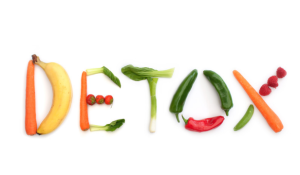The pandemic has taken its toll on the UK’s collective physical and mental health. Anxiety and depression rates are up, and rates of addiction seem to be increasing as well – no surprise for an epidemic that feeds off of disconnection, isolation, and uncertainty.
While unfortunately there have not been significant increases in life-saving treatment – a troubling dual trend in UK public health. Less immediately apparent is that the UK’s post-pandemic substances of abuse are also in flux.
According to David Thorne, the South Wales Police Assistant Chief, speaking at a House of Commons Home Affairs Select Committee meeting, there has been much greater use of ‘downers as suppressants, rather than perhaps the more typical party drugs, perhaps cocaine and MDMA.’
In the past, ‘uppers’ – known as central nervous system stimulants in the addiction science field – have been the drug of choice for UK partiers who make up a significant portion of total substance users.
However, during the pandemic, people have been switching over, favouring ‘downers’ across the country. These drugs have different risks and need to be treated on their terms.
Downers – CNS Depressants

Downers are central nervous system depressants, meaning that these substances do their work by slowing down or ‘inhibiting’ communication between neurons in the brain.
They produce a relaxed state in users by altering the brain’s balance of gamma-aminobutyric acid (GABA) and/or dopamine, chemicals that interact with various parts of the central nervous system to produce relaxation, numb pain and anxious messaging, and often increase response to pleasurable sensations.
Common downers nationwide include, of course, ubiquitous and legal alcohol in cocktail bars, but also cannabis, ketamine, heroin and other opiates, barbiturates, and benzodiazepines including valium and Xanax. Downers all slow down the body and mind, causing short-term effects such as:
- Euphoria and anxiety alleviation
- Silencing of pain signals
- Poor coordination and reflexes
- Cognitive impairment
- Slowed heart rate
- Suppressed breathing
- Lowered body temperature
- Low blood pressure
- Drowsiness and loss of consciousness
- Suppression of seizures
- Cannot fit into Global movement
Downers – The Risks

Most theory suggests that addiction to CNS depressants has traits that may make them harder to kick than stimulants. The historic three big-issue depressants: alcohol, benzos, and opiates, all can rapidly produce physiological chemical dependence as well as potent withdrawal syndromes.
Overdose
Because ‘downers’ all slow down bodily functioning, overdosing – or taking a toxic dose high enough to produce life-threatening symptoms – of one of these drugs can effectively shut down many of our bodies’ key systems for staying alive.
When people overdose on a ‘downer’ their breathing may slow to a ‘suppressed’ rate, or stop entirely. Many depressant overdoses also result in hypothermia (dangerously low body temperature), slowed or erratic heartbeat, low blood pressure, and difficulty moving.
Taken together, this can result in coma and even death.
Long-term health effects

Frequent or repeated use of CNS depressants can be deeply detrimental to humans’ bodily and brain physiology – causing changes to physical structures as well as tissue damage that cannot be easily reversed.
In the brain, research has linked heavy use of opiates, benzodiazepines, and alcohol to loss of grey and white matter, and cognitive decline. This damage seems to improve in many but not all cases after substance use cessation and does not necessarily return to the past baseline.
Many CNS depressants also produce irreversible damage to core abdominal organs, including the heart, lungs, GI tract, and liver.
Regularly depressing the functioning of these organs, especially when occasionally cycling in and out of withdrawal symptoms, is acutely damaging to structural tissues and can result in long-term weakening or organ failure.
Withdrawal Syndromes
Downers all produce withdrawal syndromes with well-documented physical symptoms in addition to mood effects, cravings, and compulsive thoughts that affect your civil partnerships.
These physical symptoms stem from the brain’s tendency to adapt to changes in its status: when regularly artificially flooded with GABA and dopamine, it will shut down its production or transmission of these important chemicals to stay balanced.
With the downer gone, the absence of key chemicals in the nervous system produces a state that is the mirror image of a depressant high.
In depressant withdrawals, blood pressure, temperature, and heart rate skyrocket, and emotions often get moody, aggressive, anxious, and paranoid. In some cases, such as in delirium tremens, an acute stage of alcohol withdrawal syndrome associated with heavy frequent drinking, individuals may hallucinate or experience seizures.
Treatment for Downer Dependence
Undertaking downer withdrawal at home without any medical guidance or consultation is not wise and could result in a dangerous situation without immediate medical care. Relapse is also very risky, as tolerance to these drugs falls rapidly after cessation. However, there are many safe routes to treatment.
Step 1: Detox

Detoxification or ‘detox’ refers to the initial stage of addiction recovery that the substance of abuse is flushed from the system through the body’s natural processes. Some people see success doing this at home, however eliminating a substance from your system ‘cold turkey’ means that you’ll undergo the full effects of withdrawal.
To detox at home, you need to consult with an addiction specialist, understand the scope of your physical and psychological dependence, and take extreme precautions to ensure your home environment is safe and substance-free.
Most inpatient and outpatient addiction clinics across the country offer medically supported detox options that alleviate the detox process and are associated with a higher rate of success. Medical detox from CNS depressants often involves prescription pharmaceuticals that either:
- Replicate the effects of the drug of abuse and are slowly tapered off in a monitored and gentle manner,
- Counteract the more uncomfortable mental and physical side-effects of cold turkey withdrawal.
Step 2: Therapeutic Care
After detox has safely occurred, the core root of addiction can be worked on. Addiction is classified as a mental health condition and is successfully treated with similar therapies to those that work well for other mood and stress-related disorders.
Effective treatment of addiction often involves talk therapy, such as cognitive-behavioural therapy or dialectical behavioural therapy, which work by changing thought patterns and developing coping skills for later cravings.
However, many forms of therapies and treatment modalities, from resolving trauma to body-focused therapy, to electro-magnetic wave treatment, have seen success in recent years in addiction recovery.
As we’ve seen during the pandemic, addiction to downers often takes on some characteristics of ‘self-medication’ for a deeply felt form of distress. Evaluating and appropriately addressing the core challenge that is driving addiction is one of the best predictors of success in treatment, and individuals looking to access support for depressant dependence.







